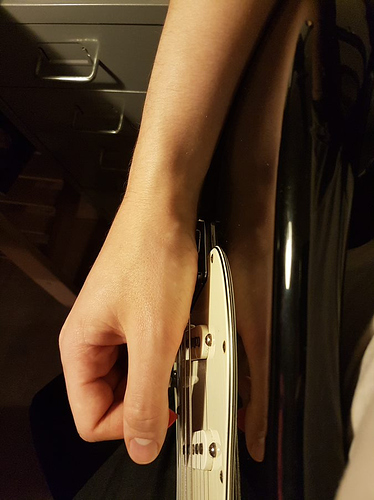Me neither. I don’t get this whole “alternate picking” thing, it all looks like down up down to me!
Kidding. Yes, crosspicking is a style of alternate picking, so it’s going to be down-up-down-up and so on. The question is how are you making those pickstrokes? You are hitting on the right point: crosspicking uses a curved, or “fully escaped” pickstroke where the pick exits the strings after every note. This is how you get over the strings hitting them.
The trick is that there are ways to do this that are inefficient and strain the arm, and there are ways to do this that are efficient and smooth. The method we’re demonstrating here is one of the smooth ones, roughly similar to what some bluegrass guitarists use.
For those that are working on this, here’s another closeup with some slow motion so you can see what this is supposed to look like:
You can see how flat the movement is. It is mostly side-to-side wrist deviation, with a dash of wrist flexion/extension as a helper. Even then, if you didn’t know that’s what was happening, you’d really be hard pressed to understand how exactly this works. At least I would, because I am not so quick on the uptake. That’s one of the reasons I dig the forward roll pattern - it’s a little physical puzzle everyone is capable of solving, and showing your friends. Like the moonwalk!
When you’re practicing, film yourself and compare, to make sure you’re getting that smooth and flat movement.



